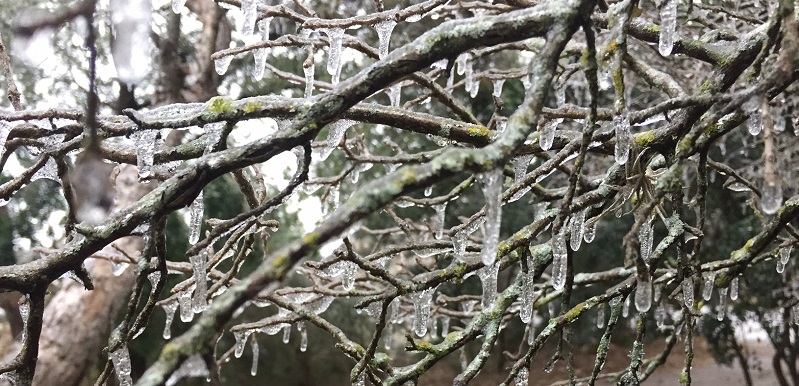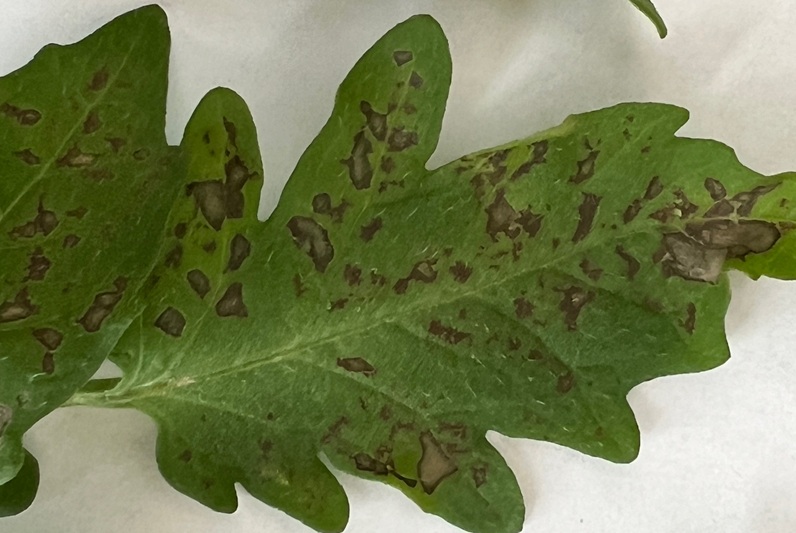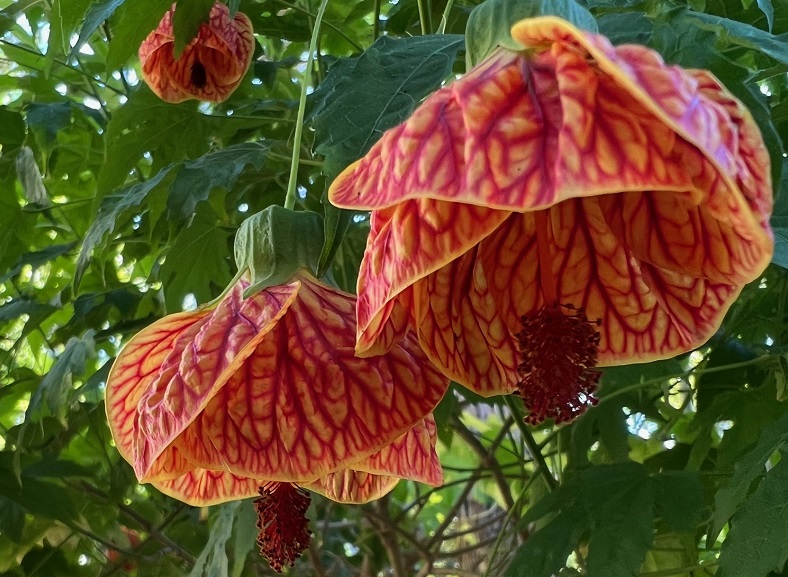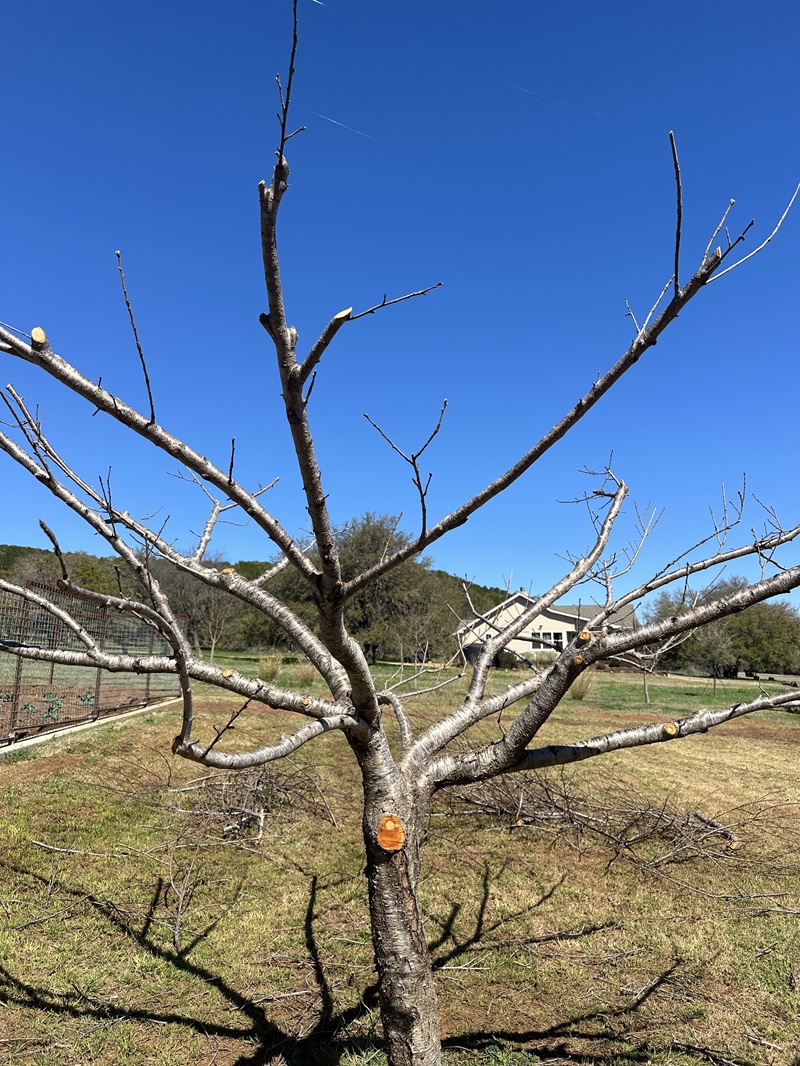Preparing for a Freeze
Winter temperatures in Central Texas can be unpredictable. Knowing what we need to protect and how to protect it is the “all important” question.
Obviously, we need to protect any tropical plants in pots if a freeze of any kind is expected. We have a blog that covers that. Click HERE to learn more about protecting tropical plants.
Every situation will be a bit different, so I will try to simplify it as best as I can.
General Information:
*Well-hydrated plants are usually more tolerant of cold, as moist soils have a higher heat capacity than dry soils, and will not get as cold as quickly. Water releases heat as it cools and can be a great insulator. Water all plants, in the ground or in pots, before a freeze.
*Duration: The more prolonged a freeze, the greater the potential for injury.
*Age of plant and stage of growth: Young, recently planted trees and plants are more sensitive to cold injury. New flushes of growth are likely to be affected.
*Trees and plants that are not protected by surrounding trees and plants, but stand alone, will be more sensitive to cold injury. Understory plants are more protected and may have less injury.
*Species of Plant: Cold temperature tolerance varies widely between species. Determine the cold tolerance Zone of the specific species to see if their cold tolerance was exceeded. Consult the USDA Plant Hardiness Zone Map for the most accurate information on cold tolerance.
*Timing of the freeze: Early freezes, before the plants have had a chance to “harden-off” properly, will affect plants more than those that have been receiving a gradual “hardening-off” and have become acclimated to the cold. Central Texas has highly variable winter temperatures, which makes it difficult for many species to enter dormancy. Plants that have begun to “emerge” in early spring with new growth will be more susceptible to cold damage, as are plants that receive an early freeze in the fall.
*Plants in pots and raised beds will be more likely to have root damage or death from freezing temperatures than those planted in the ground. Ground soil usually provides enough insulation to moderate temperatures in case of a freeze, especially if it is moist, but if above-ground in a pot or raised bed, this is not the case. Location and species play a factor in freeze damage, but I would expect the root damage to most plants in pots to be extensive with a sustained freeze.
*Mulch is a good insulator. A 2” layer applied around the roots of plants will keep the soil warmer. Do not allow the mulch to touch the trunk of trees or shrubs.
*Always anchor the protective cover to the ground to capture ground heat. Use old blankets, frost fabric or bedsheets and layer them for severe freezes. A plastic tarp may be used on top of the cloth coverings to conserve more heat. NEVER PUT PLASTIC DIRECTLY AGAINST THE LEAVES OF PLANTS.
*Tender vegetables should be watered, then covered with straw, mulch or other insulator such as a frost fabric, blankets, sheets, etc. to hold in the ground heat.
General “Rules of Thumb”:
It can Frost at 40°F if no wind and clear skies: Most plants rated Zone 8b or lower will not require protection. Cover perennials with frost cloth if still flowering, as you may get more blooms from them later. Cover anything with new growth that hasn’t had a chance to “harden off”. If plants are under a tree or overhead covering, there is no need to cover.
If we have a freeze at 32°F but just for a few hours: Most plants rated Zone 8b or lower will not require protection. Zone 9 or 10 plants may be covered with blankets anchored to the ground to capture the ground heat. This may be the freeze that kills your herbaceous perennials back to the ground, but that is expected.
Sustained freeze below 28°F : This is a freeze that lasts over 4 hours. Any “marginally tender” plants should be protected for this type of freeze. The lower the temperature and the longer it lasts, the more species of plants will need to be protected.
Crazy cold-sustained freeze below 20°F: Much depends on the health of the plant, how long it has been established, the exposure it is planted in (south-southwest is the most protected) and how sensitive it is to cold.
Here are some examples of plants that will require protection at these temperatures:
Indian Hawthorne Sago Palm Agave
Confederate Jasmine Butterfly Vine Bottlebrush
Loquat Camellia Texas Sage
Desert Museum Fig Trees Jap. Yew
Loropetalum Oleander Olive trees
Pineapple Guava Viburnum Thryallis
Pride of Barbados Esperanza Mex. Firebush
Cover what you can, and mulch the herbaceous perennials that will come back from the roots. Larger trees may have to take a hit, as they are difficult to protect. This is only a partial list of tender plants, so if you have questions, call, or email us to ask.





Leave A Comment